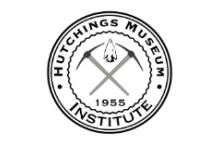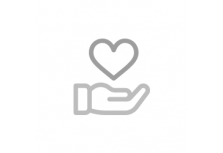Mission: Why we exist
At the Hutchings Museum, our mission is to cultivate John Hutchings’ marvelous spirit of exploration, love of nature & curiosity in visitors of all ages. Everything we do, every exhibit, & every program is driven by our core values.
Vision: The impact we strive to have
The Hutchings Museum is becoming a hub of community learning & enjoyment. Through an educational approach the Museum strives to ignite curiosity, a spirit of exploration & wildlife conservation.
Mandate: What we do
The Hutchings Museum:
▪ Delivers educational programs & learning experiences
▪ Presents compelling exhibitions & programs related to history, natural sciences, peoples & cultures & conservation
▪ Generates & shares new knowledge & research through exhibitions, publications, & web-based media
▪ Collects, preserves, & interprets significant historical objects with a focus on regional history, world history
Values: Core beliefs that guide our conduct
Preservation: We catalog & prepare artifacts for the future enjoyment & education of the public.
Restoration: We restore damaged artifacts & images for the future enjoyment, inspiration & education of the public.
Conservation: We believe in conserving the local natural environment through education & opportunities for the public to participate in local wildlife conservation projects.
Exploration: We believe in learning through doing. We provide opportunities for the public to participate in expeditions, classes, workshops & projects that will inspire & educate them.
Stewardship: We have been entrusted with many historical images, stories & artifacts. We cherish this responsibility & strive to make it accessible to future generations in-person & digitally.
Education: We believe in sharing the knowledge we have with as many people as possible. We will continue to create programs enabling the museum to reach & educate both children & adults. We create educational resources for teachers, parents & researchers.
Goals & Objectives
1. Strengthen & deepen the Museum’s engagement in the community
2. Establish the Museum as a leader & partner in education
3. Provide a fun & enjoyable Museum experience
4. Ensure long-term sustainability & grow organizational capacity
5. Strengthen the Museum’s brand, communications, & marketing
Lehi Yesteryears: The History of the Hutchings Museum
By Richard Van Wagoner
John Hutchings was born in Lehi on March 11, 1889. As a young boy John displayed a keen
curiosity in natural history. Encouraged by a supportive mother, by age five he was collecting
Native American artifacts & other items that captured his fancy.
While serving a mission in Illinois (1908-11), his entire collection was stolen.
Undaunted, he started anew. He had to begin yet again when his second collection was
pilfered while he was away working in the mines at Scranton. Hutchings was still unfazed;
his collecting hobby became a life-long passion--which was fortunately shared by his wife
Eunice & their children.
From 1918-48 Hutchings was employed by the U.S. Postal Service. He worked first
as a horse-and buggy-driving rural carrier, & later as a walking mailman. The sooner
his daily mail route was completed, the more time he had for pursuing his hobby. The
family spent much time, especially weekends & holidays, on adventurous exploring
expeditions searching for items to add to their collection.
After retiring from the post office in 1948, John & Eunice devoted virtually all
their time to caring for & adding to their collection. Their massive collection soon filled
several outbuildings, much of their yard, & all spare space in the house at 678 North 200 West.
Only about 20 percent of the more than 150,000 items on their property could be
displayed, so the Hutchings decided to take the steps necessary to make the items more
accessible to the public.
The Lehi Lions Club announced in the April 1, 1954 “Lehi Free Press” that a
tentative agreement had been reached with John Hutchings to donate his entire collection
to a “non-political, non-profit corporation” which would be named the John Hutchings
Museum of Natural History.
Harvard Hinton, local attorney & Lions Club member, drew up the articles of
incorporation. These were signed by John Hutchings on May 2, 1955 & accepted by the
State of Utah in January 1956. John Hutchings was named the museum’s curator-for-life.
Under provisions of the incorporation, John & Eunice Hutchings permanently
relinquished their collection. Neither the museum nor any funds would revert back to the
Hutchings family. In the event the corporation were to cease, certain provisions allowed
for the collection’s donation to a church, educational, or other non-profit, non-political
institution.”
The first goal of the museum board was to build a new facility for housing the
Hutchings’ overflowing collection. The Alpine District Board of Education agreed to lease a
site south of the Lehi Elementary School to the museum board for ninety-nine years.
This one-hundred-sixty-feet wide & two-hundred-twenty feet deep piece of property (part
of the old William Hutchings homestead) provided an east frontage at 649 North Center.
Plans for the new museum building were drawn by architect Lorenzo S. Young in
1956. The design of the nearly 5,000-square feet facility included five large display rooms,
preparation & storage rooms, an information office & restrooms. The fundraising
kickoff was held in November of 1956, when the Lehi Lions Club donated $600 toward the
project’s estimated $60,000 cost excluding labor.
Though the Lions Club & the Federation of Lehi Women’s Clubs were at the
forefront in fundraising efforts, most Lehi citizens participated in one form or another.
The largest source of revenue was the annual Community Carnival at Wines Park, which
started in the summer of 1958. Under the able direction of Virgil Peterson this event
received strong support from local businessmen as well as church & civic organizations.
Highlighting the 1959 Community Carnival was the unveiling of a $5,000 dollar
bust-sized statue of John Hutchings. This bronze cast sculpture rendered by Dr. Avard
Fairbanks was commissioned by the Federation of Lehi Women’s Clubs.
At the time of the museum’s April 23, 1960 groundbreaking $11,941.21 had been
raised. In 1962 the Lehi Centennial committee gave the museum what amounted to a
$4,000 gift when it donated the remaining eight-hundred copies of the “Lehi Centennial
History”which soon sold out at $5 a copy.
Ribbon-cutting ceremonies officially opening the Hutchings Museum were held on
May 7, 1965. Following the dedication nearly five hundred people were lead on
tours of the museum by John & Eunice Hutchings and other museum personnel.
Under the direction of Board of Trustees President Raymond H. Stewart,
groundbreaking ceremonies for a thirteen-hundred fifty-square-feet addition to the
museum were held on September 2, 1968. Completed the following year, this new portion
was initially used to store items still at the Hutching’s residence but was soon converted
into display space.
Burglars struck at the museum in the early hours of July 1, 1975. The thieves
gained entry by forcing a lock on the west entrance, cutting a chain, & then disabling the
alarm. The intruders had apparently cased the museum beforehand & knew precisely
what to steal. Valuable & quickly markable items such as precious & semi-precious
gems, gold silver & platinum specimens, pearls ancient Chinese vases, jade, ivory, &
soapstone carvings were missing. Also gone were the rarest guns in the weapons collection.
Within a month, Lehi Police Chief Berl Peterson reported the arrest of Donald M.
Passborg in Salt Lake City. But with the exception of the weapons most of the stolen items
were never recovered. Because the guns were required for evidence in the case, the Lehi
police department was not successful in having them returned to the museum until the
spring of 1977.
Lehi citizens were greatly saddened on June 1, 1977 when museum founder &
curator John Hutchings died at the age of eighty-eight. Widely acclaimed for his naturalist
work, he was best remembered locally for his interest in youth groups. Hundreds of Boy
Scouts received training under his patient guidance as a scoutmaster & merit badge
counselor.
Also notable were his personally conducted tours for thousands of school children
through his museum. He was endowed with numerous awards & honors; the Sons of
the Utah Pioneers in 1967 named John & Eunice as the Outstanding Couple of the State
of Utah.” After Hutchings’ death his son Harold became the museum’s curator.
Few communities are as fortunate as Lehi in having such a renowned resource as
the John Hutchings Museum. The collection is superb, the displays well arranged, and
the guides truly interested in pointing out unusual items and sharing colorful anecdotes.
People from every state of the union and many foreign countries have been led through a
museum tour. The Hutchings Museum has won national & international accolades for the
depth & variety of its collection.
The Hutchings Museum belongs to the people of Lehi. And the agreement drawn up between
Lehi City Corporation and the Hutchings Museum Board of Directors virtually guarantees the
long-term future of our famous institution.
Cacher le texte au complet
